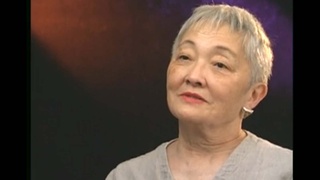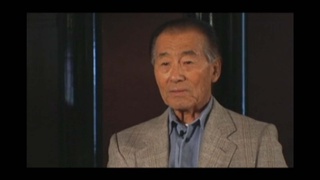Interviews
Larry designing chairs in the camp
Next morning when we got up from these iron beds, on this old terrible mattress, Lawrence said, "Last night when we went to stuff these mattresses, I noticed there were some crates behind the latrine. I think I could make some chairs for mom and grandma." Lawrence already had conceptualized how he could make those into these really wonderful chairs.
So he kept one box pretty much in its regular shape but he took the top solid area out and lowered that to make that a seat then on the second box, he took one of the sides and he reclined it on the seat to make a reclining back. The three sides become the three sides of the chair and he took two heavier boards and made armrests. So it really was a perfect chair, a lounge chair almost, it was a perfect chair for a short person.
My mother and grandmother were under five feet and they just loved it. And my grandmother, I don’t know whether she had those cushions; she had brought them with her, because she always had zabutons. So she might have stuffed them in her duffle bag; we each came with a duffle bag. I don’t know, but anyway, she had those cushions that she put on there.
I still remember them praising those chairs and then my grandmother said, "Well, this isn’t such a bad place after all," she said, "I’m grateful." And she said, "And then the water is good here, it tastes good and we have nice water all the year round so what more could you ask for? We should be grateful that we have that," she said, "Now that I have the chair," she said, "I'm a very content obaasan."
I still remember my grandmother saying that and my mother was very happy. And well word spread like wildflower, people heard about these chairs and there was a run on toilet boxes. And it was a long time before we had more than two chairs.
Date: September 9, 2011
Location: California, US
Interviewer: John Esaki
Contributed by: Watase Media Arts Center, Japanese American National Museum








